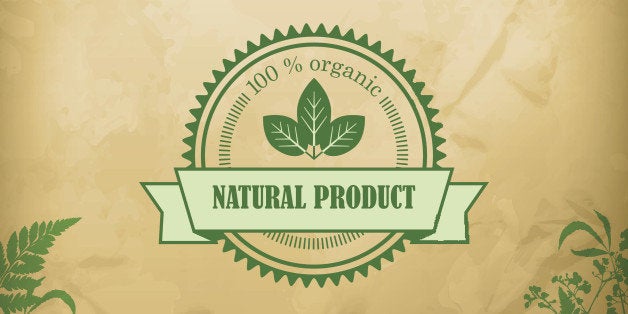
I frequently meet my clients at their local supermarkets so we can walk the aisles together. Most find it incredibly eye-opening: Sometimes what they think they know about which products to select or how to read food labels turn out to be misconceptions. For example, one client recently told me she avoids oats because they contain gluten. In reality, oats are gluten-free, unless they’ve been contaminated with gluten during growing or processing, but many companies make pure, uncontaminated oats, and label them as such. She was thrilled to be able to eat oats for breakfast again!
But gluten aside, there are a number of other issues and terms that can confuse even the most educated shoppers. Many of them sound healthy on their own -- that is, they have a health halo effect. Here are five of the buzziest, what they really mean, and what they don't.
Natural
The Food and Drug Administration has not developed a formal definition for the term natural. However, the government agency doesn't object to the use of the term if the food does not contain added color, artificial flavors or synthetic substances. Natural does not mean organic though, and it doesn't necessarily indicate that a food is healthy. For example, today I saw a cereal labeled natural, and it contained a whopping four different types of added sugar. Tip: When you see this term, read the ingredient list. It's the only way to really know what's in a food, and if it's worthy of a spot in your cart.
Organic
The USDA Organic Seal indicates that a food was produced without synthetic pesticides, bioengineered genes (GMOs), or petroleum or sewage sludge-based fertilizers. The symbol also means that organic meat and dairy products are from animals fed organic, vegetarian feed and are provided access to the outdoors, and not treated with hormones or antibiotics. If the seal says "100% Organic" the product was made with 100 percent organic ingredients. Just the word "Organic" indicates that the food was made with at least 95 percent organic ingredients.
"Made With Organic Ingredients" means the product was made with a minimum of 70 percent organic ingredients, with restrictions on the remaining 30 percent, including no GMOs (for more about GMOs and what the Non-GMO Project Verified Seal means, something else you might see on a packaged food, check out my previous post 10 Healthy Eating Apps This Nutritionist Loves). I strongly support organics, but like natural, the term organic doesn't necessarily mean healthy -- in fact, there are all kinds of organic "junk foods" like candies and baked goods. Once again, when buying packaged food, the real litmus test is the ingredient list.
Local
This term generally indicates that a food was produced within a certain geographical region from where it's purchased or consumed, such as within 400 miles or 100 miles or perhaps within the borders of a state. Like "natural", there is no formal, national definition for the term local. What local does not mean is organic, which is something 23 percent of shoppers falsely believe, according to a recent U.S. and Canadian survey (17 percent also believe that a food labeled organic is also local, which isn't accurate either).
Nearly 30 percent also think that "local" products are more nutritious, and that's not a given, since there are no specific standards pertaining to ingredients or processing. Also, it's important to know that a locally produced food may not contain a nutrition facts label, because small companies with a low number of full-time employees or low gross annual sales are often exempt from the FDA's food labeling laws. Hopefully a locally produced goody, like a pie from your farmer's market, will include a voluntary ingredient list, but if not, be sure to ask what's in it and how it was made.
Gluten-Free
According to the FDA, the term "gluten-free" means that a food must limit the unavoidable presence of gluten to less than 20 parts per million (ppm). The FDA also allows manufacturers to label a food as gluten-free if it does not contain any ingredient that is any type of wheat, rye, barley or crossbreeds of these grains, or has been derived from these grains, or if it contains ingredients that have been derived from these grains, but have been processed to remove gluten to less than 20 ppm.
This means that foods that are inherently gluten-free, like water, vegetables and fruits, can also be labeled as gluten-free. The term gluten-free does not indicate that a food is whole grain, organic, low carb or healthy. In fact, many gluten-free foods are highly processed and include ingredients like refined white rice, sugar and salt. For more about gluten, including common misconceptions, check out my two previous posts 5 Things You Need to Know About Gluten and Your 5 Worst Gluten-Free Mistakes.
Grass-Fed
Recently, I've had several clients who eat beef and dairy tell me that they only buy grass-fed, but most mistakenly believed that grass-fed also means organic. The actual parameters, as defined by the USDA, state that the cattle must be fed only mother's milk and forage (grass and other greens) during their lifetime. The forage can be grazed during the growing season, or consumed as hay or other stored forage, and the animals must have access to pasture during the growing season.
Grass-fed does not mean that the cattle's feed is organic, and it doesn't mean they cannot be given hormones or antibiotics. Compared to products produced conventionally, grass-fed meat and dairy have been shown to contain more "good" fats, less "bad" fats and higher levels of vitamins and antioxidants. But if you want to ensure that the product also meets the organic standards, look for that label term and the USDA organic seal as well.
More from Health.com:
12 Food-Industry Tricks That Undermine Clean Eating
16 Most Misleading Food Labels
27 Mistakes Healthy People Make
5 Most Confusing Health Halo Food Terms originally appeared on Health.com

